New Gear We’re Excited About
New technology can be game-changing, of course, especially in the backcountry category, where the holy grail of uphill tourability and downhill skiability is becoming more possible every year. It can also be inspiring, giving you the stoke you need to set the alarm for ungodly hours to brave whipping wind and bitter temperatures. But more than anything, gear is, plain and simple, your vehicle for joy.
Here are the backcountry skis, boots, bindings, packs, and beacons we’re most excited about this season.
SKIS

Come couloir season, when grams matter and sleep doesn’t, the Dynafit Blacklight 95 will take you there. As the newest and widest addition to the fast-ascent Blacklight series, the Blacklight 95 will certainly be the most versatile for soft and variable snow on the descent. It has rockered tips and tails to float and release easily in tricky sun-affected snow, and its full-carbon core is certainly light for the uphill. As with all full-carbon skis, it’s probably a bit twitchy, too, but a structural sidewall cap construction will certainly add some stability.
$750, 1,220 grams/ski @ 172 cm

Völkl revamped their 98-waisted predecessor to make it 100 grams lighter and slightly narrower. (You won’t miss the girth, but your hip flexors may be happier.) The previous iteration was a notable for its versatility, and we expect this one will be equally as adaptable. The flat tail should offer superior snow contact and control, while rockered tips are designed to surf through boot-top pow and slush. Made from lightweight paulownia wood, this ski will likely be more responsive and stable than the full-carbon offerings.
$825, 1,262 grams/ski @ 170 cm

We’re excited about this new offering—their first ever dedicated backcountry ski—from the Avon, Colo.-based brand. The wider 106 waist width is ideal for soft-snow adventuring, and it comes at a respectably light weight. (We’re guessing the extra grams will be worth it when you’re surfing through the fluff.) It’s made from the same mold as the resort-oriented Origin 106, but without the metal that weighs it down. The core is bamboo, aspen, cedar, and carbon, which should be a nice blend for responsiveness and liveliness. A tail notch keeps skins where they belong.
$950, 1,670 grams/ski @ 182 cm
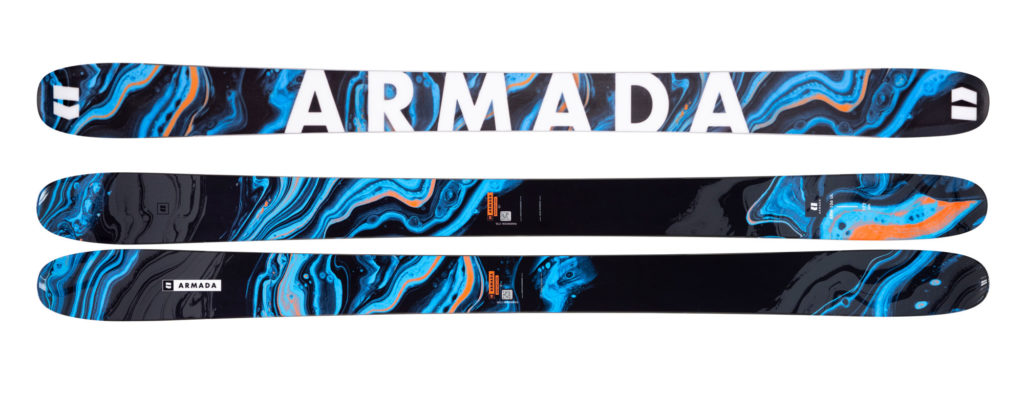
Again, this ski had us at its 106-mm waist, which we feel is perfect for backcountry pow slaying. The ARW UL is technically a women’s ski, but with sizing that goes up to 188 cm (thank you, Armada, for giving women the respect we deserve), we’re guessing the dudes are going to be psyched about it, too. Made from ultralight (hence the “UL” in the name) caruba wood core, it promises to be light and poppy, with more stability than the pure carbon offerings. Edgeless beveled tips and tails are designed to float effortlessly, and the twin-tips will make for a playful ride that will butter and pivot on a dime.
$825, 1,750 grams @ 172 cm
BOOTS
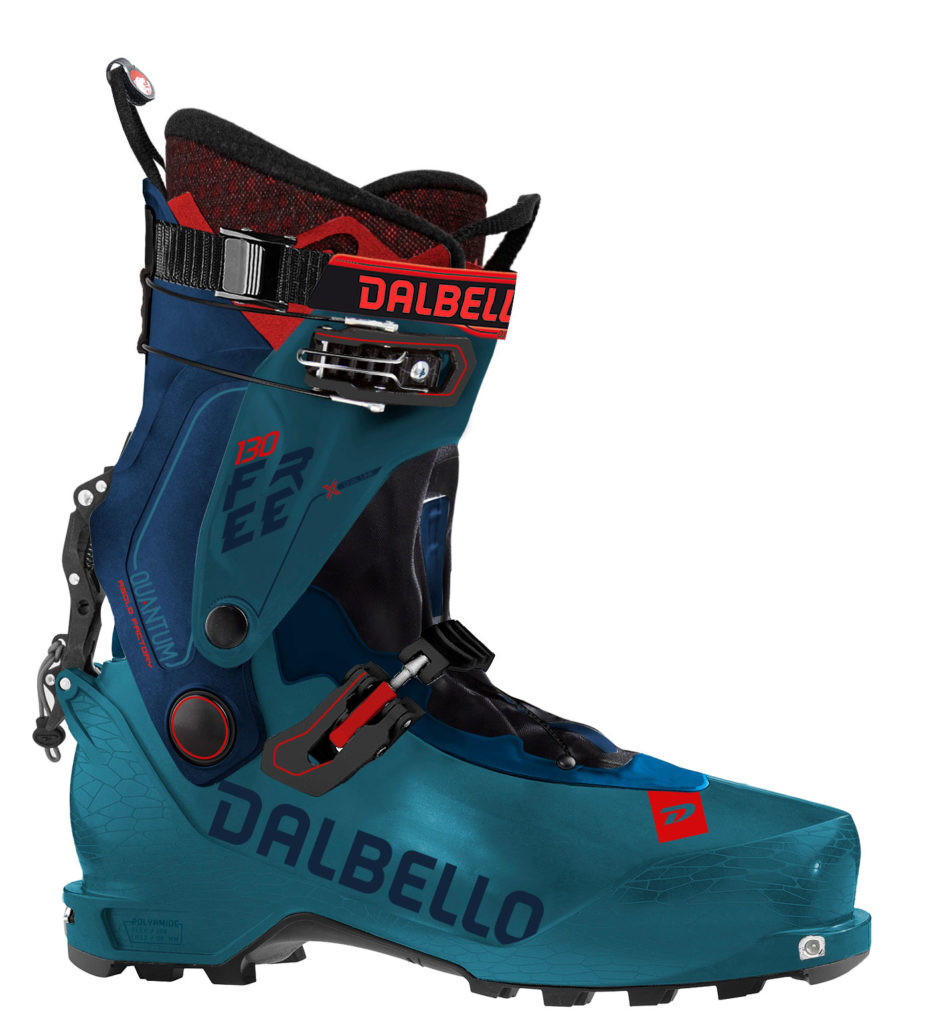
Dalbello Quantum Free Asolo Factory 130
This is a light boot built for fast ascents. It has 65 degrees of range of movement, carbon in the shell, and a fabric panel in the shin in lieu of plastic to shave weight. From our initial testing, it doesn’t feel quite as stiff as it claims, but then again, neither does any backcountry boot, really. It did feel torsionally stiff enough, however, which is impressive considering its lightness. The new women’s version is the Quantum Free 105 W, which has a 105 flex.
Men’s: $950, 1,250 grams/boot @ 26.5
Women’s: $650, 1,230 grams/boot @ 26.5, 105 flex, 100 mm last
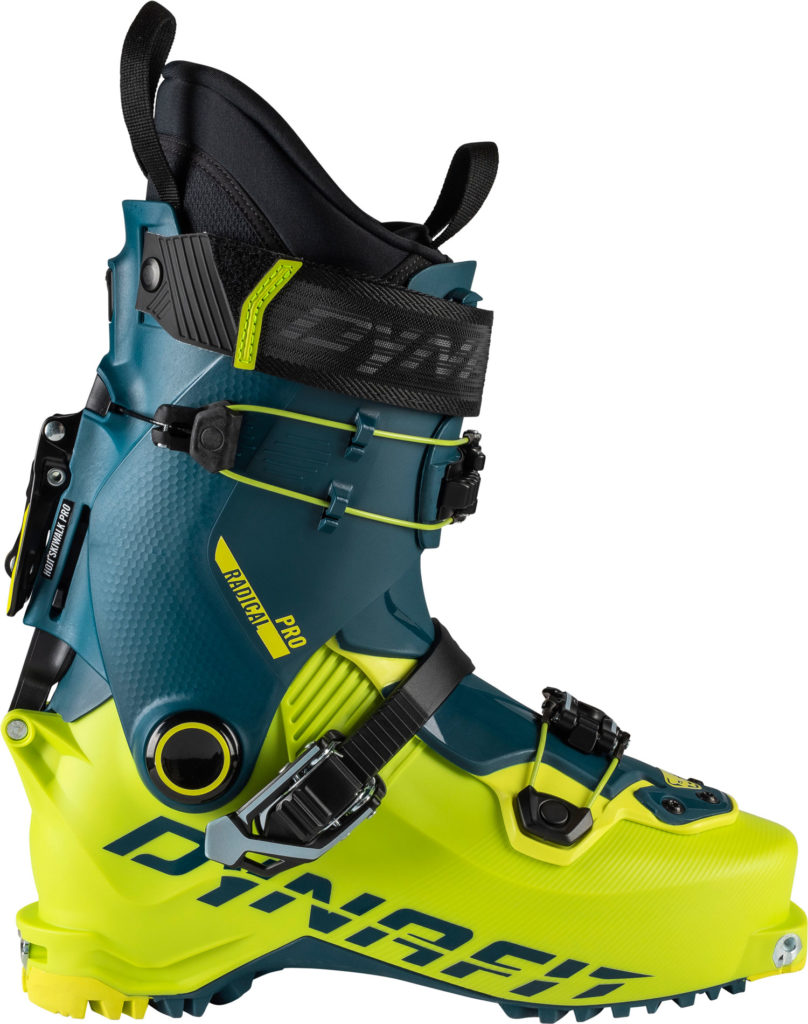
Dynafit Radical Pro/Radical Pro W
The Hoji Pro Tour gets a major update in the form of the new Radical Pro. It still incorporates Dynafit’s revolutionary Hoji Lock walk mode, which tightens or loosens the entire boot with one flip of a switch, but it’s lighter weight is more long-tour friendly, it fulfills a wider range of binding use, a new tongue delivers better downhill performance, and a higher instep resolves the fit issues testers had with it in the past. It’s also refreshingly easy to get on and off. No, it’s not the lightest out there—but its extra grams may be worth it for excellent skiability. The Hoji Lock makes for quick transitions, which you can kick into ski mode without even bending down.
Men’s: $800, 1,380 grams/boot @ 26.5, 120 flex, 103.5 mm last
Women’s: $700 1,270 grams/boot @ 24, 110 flex, 103.5 last
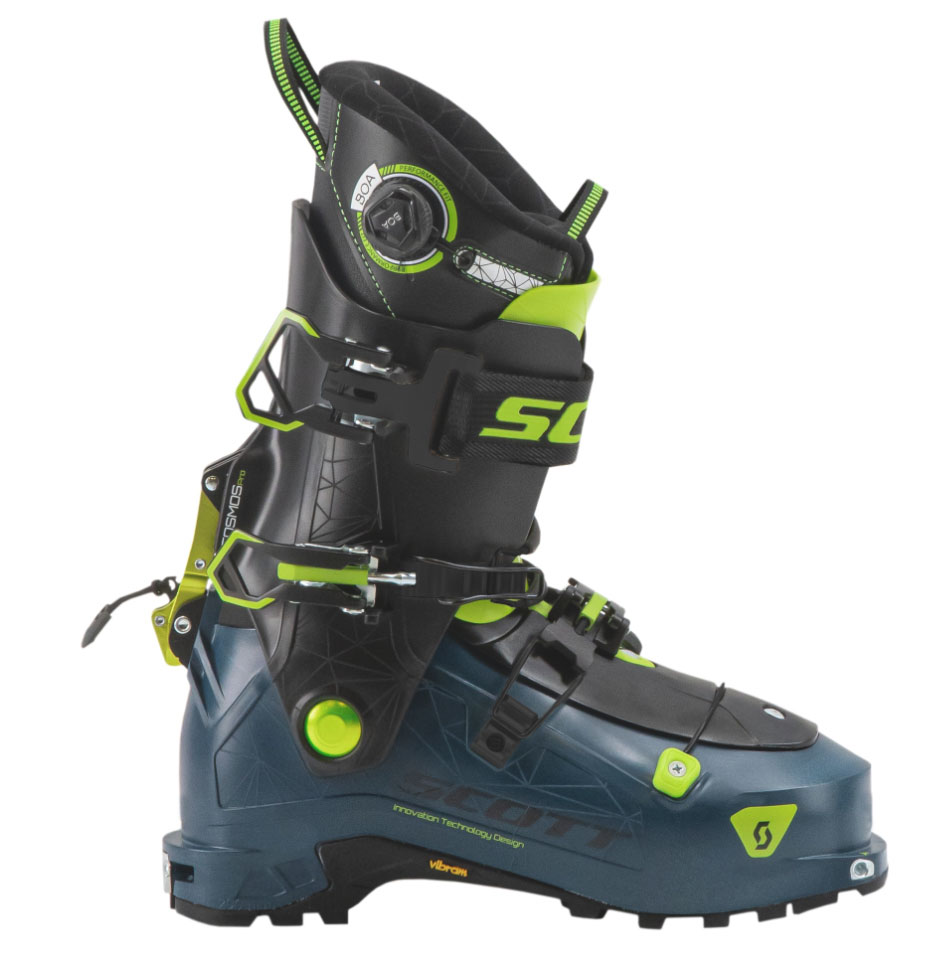
Scott Cosmos Pro 130/Celeste Tour 110
This is a boot for those who believe you go up to go down. It’s light enough for long days yet stiff enough to really give ’er. The entire Cosmos line is new for Scott, and the Pro is the stiffest in bunch. What’s really exciting about it, however, is its innovative new hybrid-cabrio shell, which combine the progressive flex of cabrio with the power of an overlap. It boasts a 60-degrees range of motion and a Boa closure on the liner—a nice adoption from the lace-up liners found in alpine race boots. The new women’s version is the Celeste Tour, which has a 110 flex.
Mens: $800, 1,400 grams/boot @ 26.5, 125 flex, 102 mm last
Women’s: $700, 1,150 grams/boot @ 24.5, 110 flex, 103 mm last
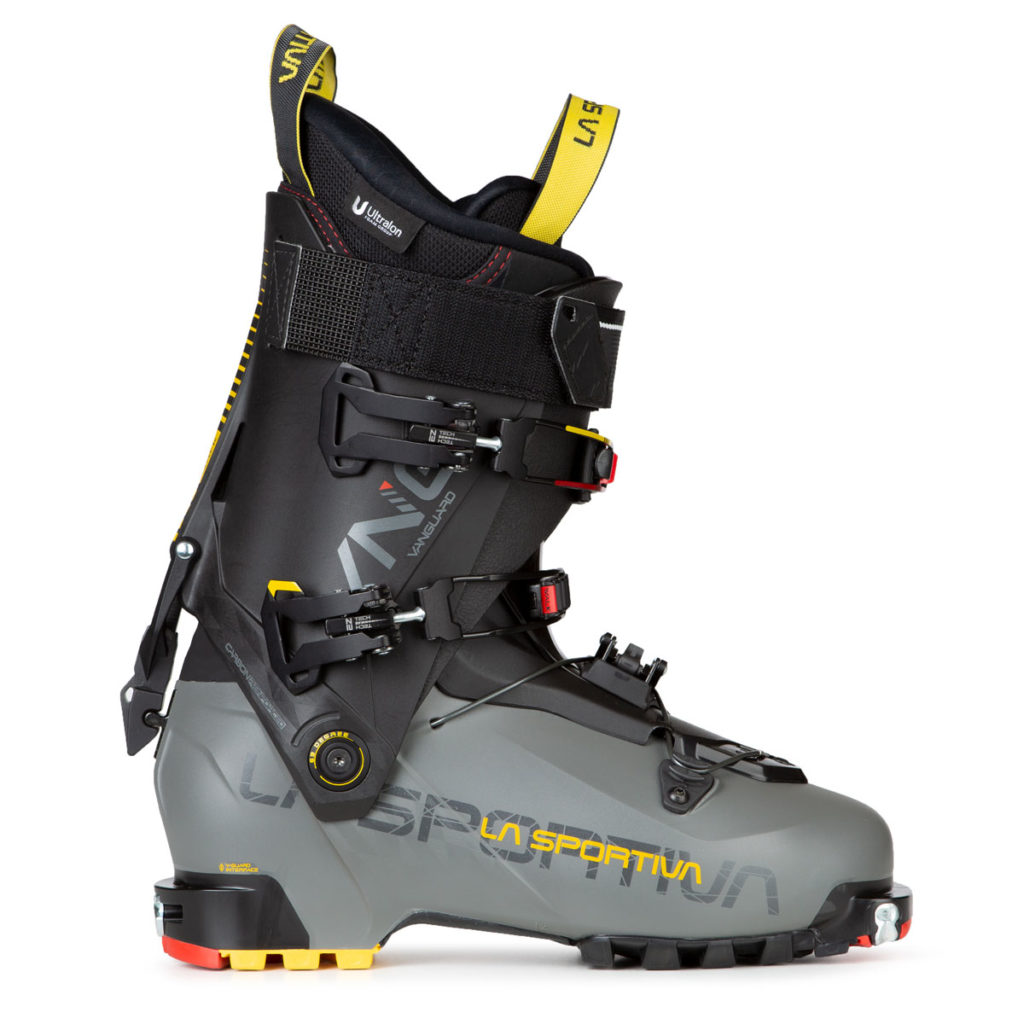
To say we’re excited for this boot is an understatement—it’s so complex and boasts so much new tech that it took the Italian brand forever to release it. It has a completely new overlap design that utilizes six (yes, six) pieces in the shell, and when you open it up, it resembles a mechanical flower, with petals splaying out. The idea is that when it’s locked into ski mode, all these petals will add stiffness and a progressive flex, making it far burlier than others in its weight class. A V-shape cuff also makes it easy to get on and off, and the Pebax is bio-based, so it’s easier on the environment. Cables closures shave weight and offer uniform snugness.
Men’s: $899, 1,370 grams/boot @ 27, 130 flex, 102.5 mm last
Women’s: $ 899, 1,270 grams/boot @ 24, 115 flex, 102.5 mm last
BINDINGS
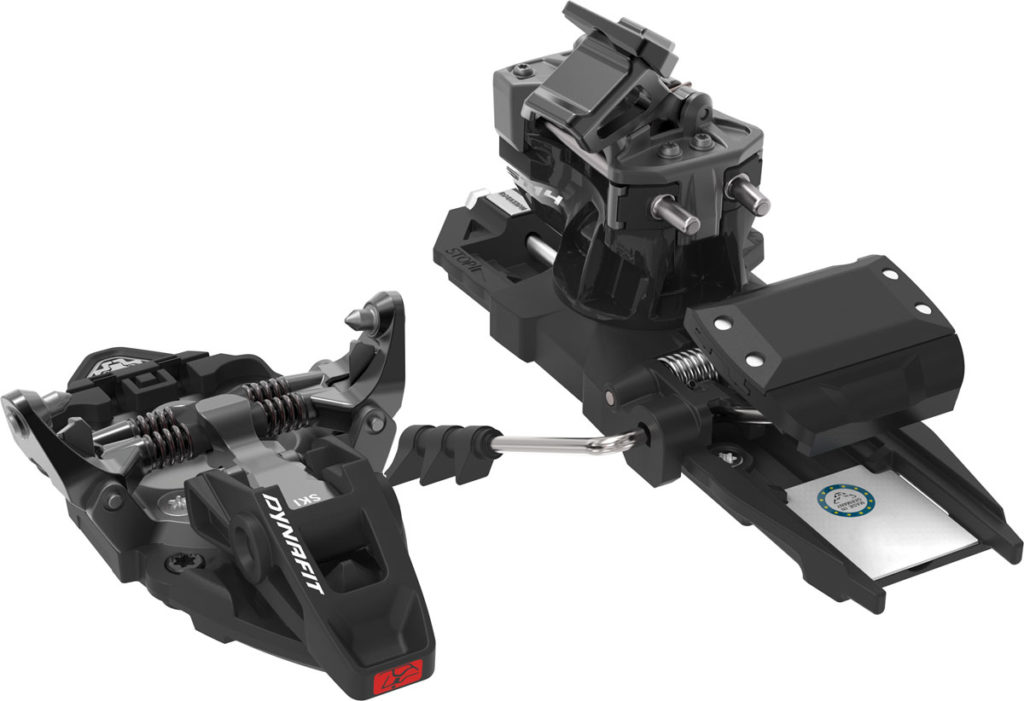
The new Rotation 14 brings skiability and tourability closer in the space-time continuum. is the beefiest in Dynafit’s lineup. It boasts stiffer springs in the toe, which translates to harder charging for you, and it only weighs 605 grams. The Rotation 14 is also the first traditional tech binding with a full TUV safety certification, too, which means it has similar safety ratings as an alpine binding.
605 grams, DIN 7-14
PACKS
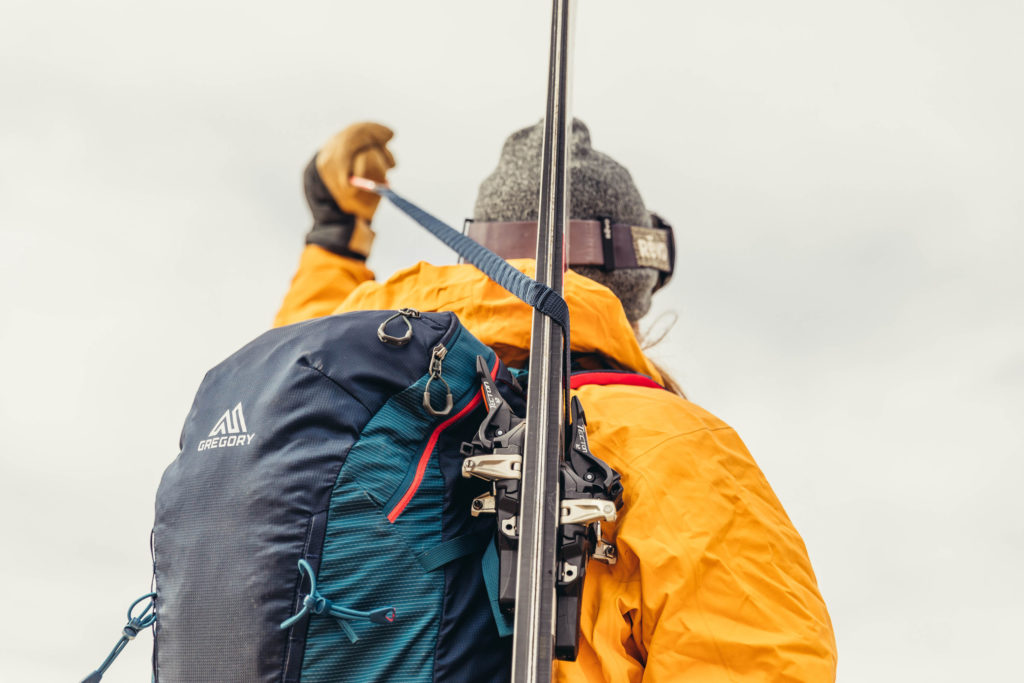
Finally some genius in the R&D department has come up with an easy system for putting your skis on your pack without taking the whole damn thing off. Just put your tails in the lower loop, hook the tips with a piece of webbing that brings them into place across your back, and secure it into the shoulder strap. We’re guessing this will be a transition game-changer, especially in situations like bootpacking in the high alpine or navigating late spring runouts, when you’re constantly putting on and taking off your skis. Also notable, you can strip out the hipbelts, top pocket, and frame sheet to transform it into a minimalist alpine touring pack. And, as per Gregory’s modus operandi, it doesn’t feel overdesigned—just perfectly functional.
BEACONS
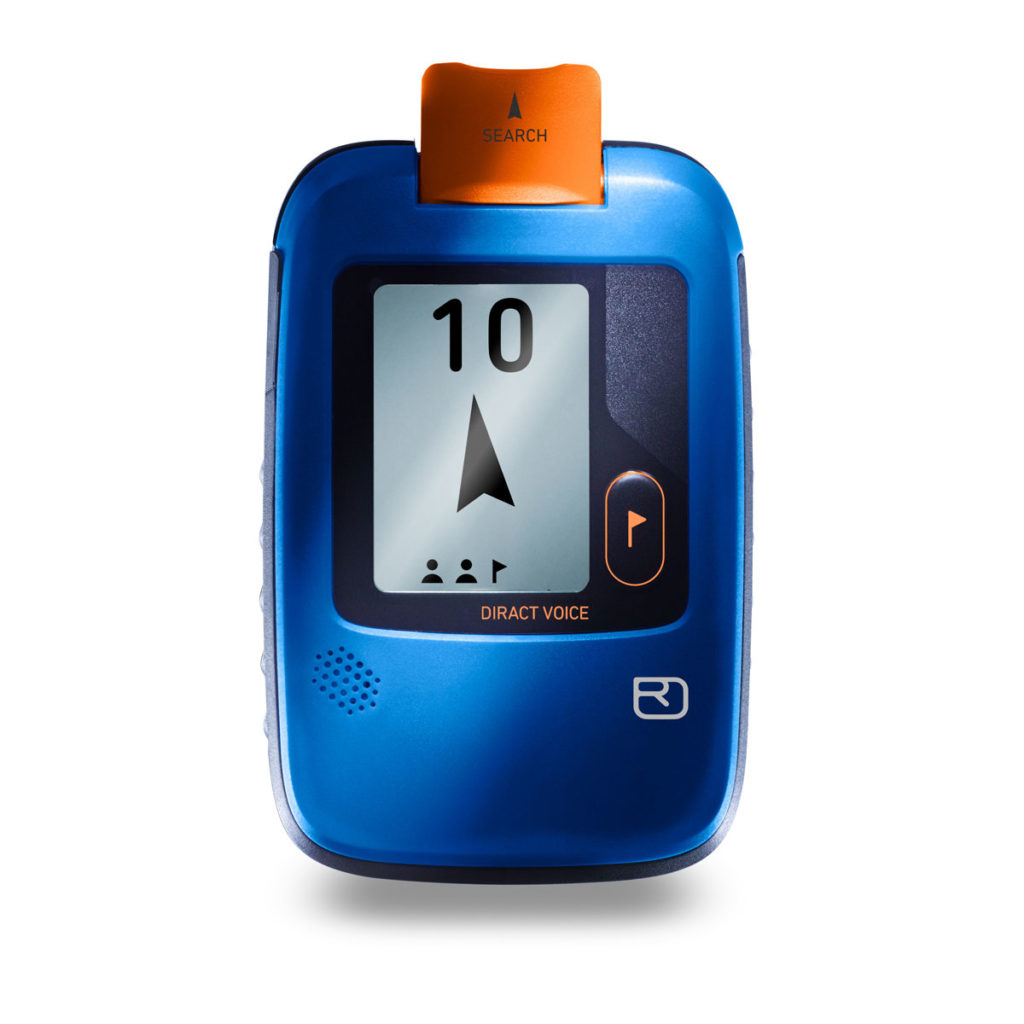
We previewed this award-winning beacon last season, and now we’re excited to test in the field. Ortovox’s new talking beacon is designed to keep you calm under pressure. The idea is that voice commands use less brain power than reading a screen, and the sound of someone instructing you what to do may ease panic and anxiety, ultimately (hopefully) shortening the time it takes to locate the burial. It also conveys more information than a screen can without becoming complicated, such as “Go down to the snow surface.” Worried about it being as distracting as your phone navigation? Don’t, because it only talks when you make mistakes. It also boasts clear graphics, an extra large screen, and an intuitive design.
$380


